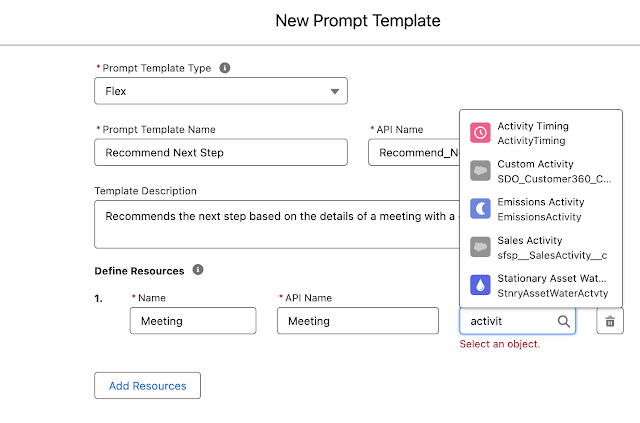Image generated by DALL-E 3 based on a prompt from Bob
Buzzard
Introduction
If you've seen any of the demos of Einstein Copilot, you'll notice that
sometimes the responses are nicely formatted using the Lightning Design
System, while other times they are simply text on a darker background - e.g.
from the TrailblazerDX keynote, the pipeline information is text:
While the contacts are shown as a formatted list, with fields specific to the
solution:
This isn't particularly well documented, so it's a matter of trial and error
to figure out what works and what doesn't.
Text Responses
Text responses came out the same regardless of what I tried - the text that I
return appears on a dark background. If I format it as JSON or CSV, it comes
out in JSON or CSV format, even if I included instructions to display as a
list of label/value pairs.
The same goes for HTML markup - it's taken as text and shown to the user.
Using \n for a line break works, but aside from that what you return from your
custom action is what you see on the screen.
Custom Class
Returning custom class instances introduce a little more formatting. You can
only return a single "value" from your custom action, but this can contain a
list of custom class instances and Copilot will render each of the properties
in it's own "text box". In the example below I return a single instance of my
custom class Output, but this contains a list of instances another custom
class. These in turn which contain the fields from Task records (as using the
Tasks directly throws errors) :
public class Output
{
@InvocableVariable
public List<CustomRec> recs;
}
public class CustomRec
{
@InvocableVariable
public String ident;
@InvocableVariable
public String subject;
@InvocableVariable
public String description;
@InvocableVariable
public String activityDate;
public CustomRec(Task task)
{
this.ident=(null!=task.id?'ID : ' + task.Id:null);
this.subject=(null!=task.Subject?'Subject: ' + task.Subject:null);
this.description=(null!=task.Description?'Description :\n' + task.Description:null);
this.activityDate=(null!=task.activityDate?'Due Date : ' + task.activityDate:null);
}
}
Copilot displays the properties from each record, although there isn't any
separation between records. There's also a wrinkle in there I wasn't expecting
- the properties are displayed in alphabetical order : activityDate,
description, ident, subject. While unexpected, this does give me a way to
order the properties if I need to:
sObject Records
As before, I can only return a single item from a custom action, so if I want
to send back a list of records I have to wrap them in an containing class:
public class Output
{
@InvocableVariable
public List<Opportunity> opportunities;
public Output()
{
opportunities=new List<Opportunity>();
}
}
And this comes out very nicely, with a card for each record:
sObject Records and more!
This is the one that I'm most pleased about - it allows me to display records
and some commentary about each record, while still retaining the Lightning
Design System formatting for the record itself.
Once again I'm returning a custom class containing a list of other custom
classes, but this time it's a wrapper class containing an sObject record and
some additional information:
public class Output
{
@InvocableVariable
public List<OpportunityWrapper> opportunities;
public Output()
{
opportunities=new List<OpportunityWrapper>();
}
}
public class OpportunityWrapper
{
@InvocableVariable
public Opportunity opp;
@InvocableVariable
public String message;
@InvocableVariable
public String trailer;
@InvocableVariable
public String zzzSeparator='-----------------------------';
public OpportunityWrapper(Opportunity opp, String message, String trailer)
{
this.opp=opp;
this.message=message;
this.trailer=trailer;
}
}
I really didn't expect this to work, but it did!
I've taken advantage of the fact that the properties are displayed in
alphabetical order to display a message about how near the close date is, then
the record, then some commission information, followed by a rather ugly
separator. I think if I was going to use this in production I'd have all the
message above or below the record so that I didn't have to put a clunky
separator in, but I wanted to see if I above and below would work.
Conclusion
I don't think this is too bad, given that Copilot is at its heart a text based
tool. Hopefully in time we'll be able to apply more formatting to text output,
but at least sObject records are styled for the Lightning Experience. Worst
case, we all end up polluting our Salesforce org with a bunch of fake records
that are just used as carriers for Copilot responses!
Related Posts









































